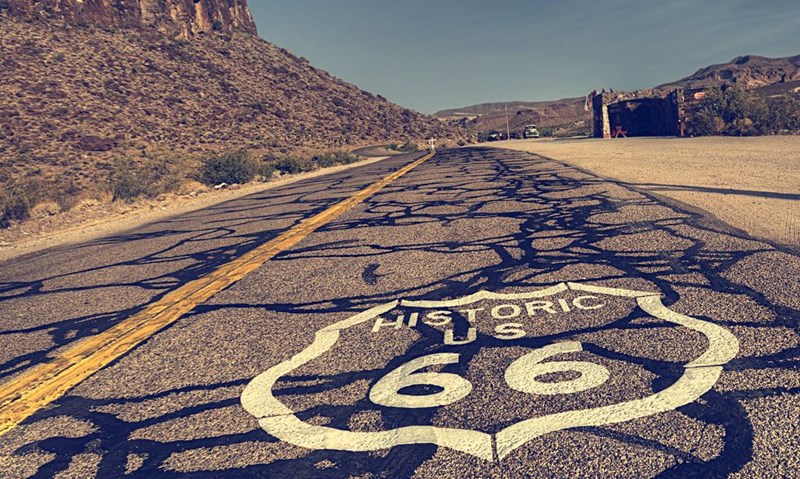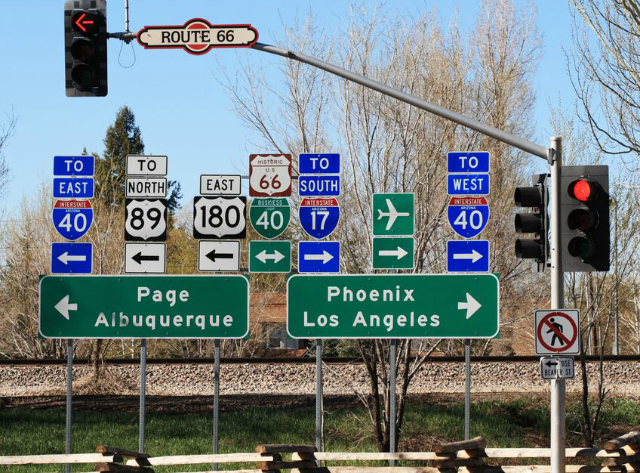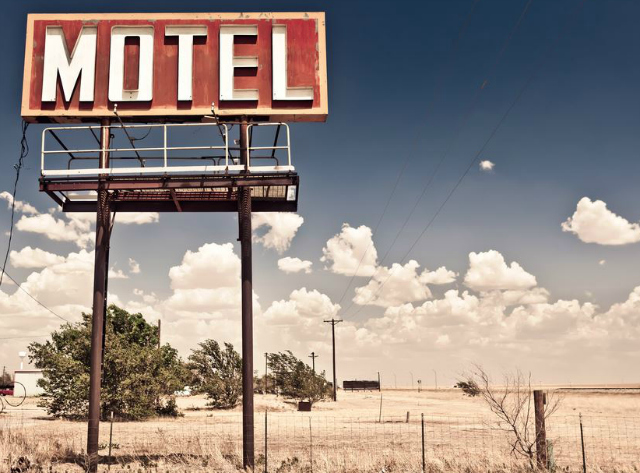
It's a dream for so many people: travelling along the fabled Route 66 in a Mustang convertible, the sun setting, the mountains casting dreamy shadows over the dusty prairies and gentle country music providing the perfect soundtrack to this once-in-a-lifetime experience. Or something like that.
A recent Discovery Channel survey found that this trip, along with seeing the Northern Lights and diving the Great Barrier Reef, formed British holidaymakers' top three 'bucket list' adventures and it's easy to understand why.
This iconic route has been immortalised in songs and on the big screen, giving it an almost ethereal feel. Those travelling along it feel like they are part of something historically significant - and so will you.
Also known as the Will Rogers Highway, the Main Street of America and the Mother Road, U.S. Route 66 was established pn November 11, 1926. It snakes 2,451 miles through eight separate states, stretching from Chicago, Illinois to Santa Monica, California. The largest section of road falls within Oklahoma, measuring some 430 miles and the smallest runs just 13 miles through Kansas.
However, what some people may not be aware of is the fact that the road was decertified in 1985 and is no longer recognised, having been replaced by the speedier Interstate Highway System. It was given a 'National Scenic Byway' designation and officially renamed 'Historic Route 66'.
When planning your own Route 66 trip, you'll see there's a lot to see and do - how can you possibly incorporate everything into just a few weeks? Don't worry, we've asked fans, travellers and experts for their top tips to compile this: the complete, two-part guide to driving Route 66.

Plan your route in advance:
Before you do anything, it's highly recommended that you obtain a guide book and of all those mentioned, Jerry McClanahan's EZ66 Guide for Travelers was most highly rated. This guide book will become your bible and help you plan your route, as it's essential that you plan in advance. The signs can be few and far between, so they're easily missed and can't be relied upon.
When planning your route, there are several elements you should bear in mind. Firstly, stick to the original route and avoid the interstate where possible, as you'll miss loads of wonderful towns and sights if you deviate. Plus it rather negates the whole point of your trip, doesn't it?
Allow plenty of time between journeys so that you can enjoy a comfortable drive, not endure eight hours at the wheel with no time to explore. This might mean leaving a little earlier than you'd like, but it's better than driving in darkness and being unable to see the incredible, varied landscape.
Driving - what you need to know:
To drive in the USA, you must possess a valid driving licence and be aged at least 21. It's a good idea to familiarise yourself with US driving rules. While the specifics may vary a little between states, the rules remain largely consistent across the US; observe the speed limit, wear seat-belts and pass on the left. Driving in busy cities may seem daunting, so keep in the slow lane until you feel more comfortable.
When it comes to renting a car, it's a good idea to make arrangements before you leave and do your research to avoid unexpected or inflated costs. Some car rental firms may charge a premium for drivers aged up to 25 years, others might add extra for additional drivers. Your quote may include drop-off fees and excess mileage charges, but, if you have the time, you could actually save money by doing the round trip from Chicago to LA and back again. That will cut out the fees and domestic flights costs.
Insurance is another consideration, of course, but this is purchased at your discretion. It's a good idea to check your own motor insurance policy to determine whether you may already be covered for driving internationally.
Lastly, when you're on the road, keep a close eye out for your first R66 shield, it's amazing when you see it!
Choosing the perfect car:
Deciding on the right car is tricky, as it effectively pitches your heart against your head. Do you want to do it in classic style, opting for a convertible at the expense of space and comfort? Would an economy car be preferable as it's easier to drive but not very romantic? Or should you go for the mid-size SUV that can cope with anything but might take some getting used to?
Only you can decide, but when making that decision, think about the time of year that you are travelling. What sort of weather are you likely to encounter? Would a soft-top stand up to hailstones? Would a Jeep be too hot in the deserts? Comfort is a prime concern; you're going to be in your vehicle for hours at a time, don't forget. Therefore, ensure you choose a car that is big enough to accommodate all passengers and their luggage.
A tip that most of our experts shared was to choose a car that was fitted with air conditioning. Windows and a sunroof won't be sufficient in the warmer temperatures and even if you hire a convertible, there will be times when you don't want to drive with the roof down, so find one with A/C. Also, while the USA enjoys some of the world's lowest fuel prices, it's always a good idea to ask about gas consumption, to make sure your car is at least a little economical.

To sat nav or not to sat nav? That is the question:
There seem to be arguments both for and against use of a sat nav. Opponents claim it takes the romance out of the trip, while others say it's imperative. It seems to boil down to this fact: Route 66 isn't a recognised road and some stretches are really old so may not be picked up on a sat nav. That said, if you need to deviate onto the interstate to reach hotels, etc, then the sat nav could be handy.
Ultimately, it's up to you. A supply of good maps should navigate you perfectly well along R66, but if you feel more confident with a sat nav, then pay for one when you hire your vehicle. If you are bringing your own, make sure it's been updated with US maps and has the right adaptor. Alternatively, it might even make more sense to go to WalMart and buy one brand new. There will be plenty of travellers you can leave this with or potentially sell it to when your trip is over.
What to take:
In addition to your fabulous maps, guide books and cameras, it's wise to pack clothing for every meteorological eventuality. You never know what conditions you might be confronted with from one day to the next - from extreme heat to freezing rain. Don't assume that travelling in the summer will necessitate only t-shirts; places like Flagstaff are very windy and you'll want to wrap up, no matter the time of year. Comfy shoes that you can drive in are essential, naturally. Don't forget the important documents like your passport, ESTA visa (if appropriate), travel insurance policy and driver's licence, plus any booking confirmations.
Now you’re set with your car and maps, check out Part Two for where to go and what to see.
← Check out the winning entry for our Columbus Day competition